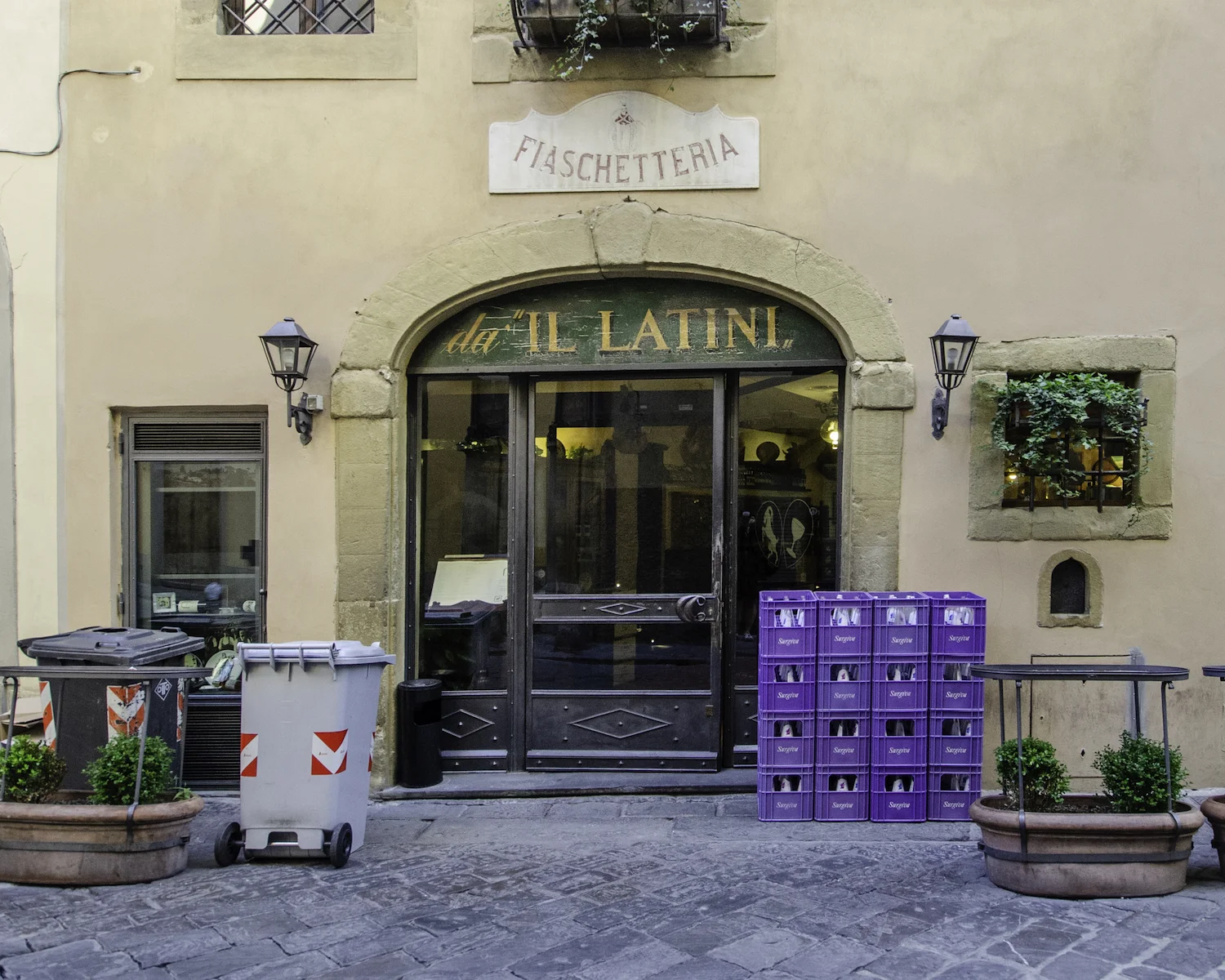
WINE DOORS OF FLORENCE
A Brief History
There are approximately 179 wine doors in the city of Florence. A few are in the countryside but they are a Florentine phenomenon. In 2013 I became infatuated with them when a tour guide pointed out the most famous and obvious wine door on via delle Belle Donne, 2. Here, visitors can read the hours of operation carved into the marble. However, many are just outlines into the stone or are tucked down narrow alleyways. I’d asked quite a few people about their origin but they didn’t seem to know or care too much. Long live the librarians! While at Oblate library, I was directed to a single, slim, 10-year-old book about the wine doors. With the list of addresses in the back of the book, I immediately began scouting their locations and logging them on Google maps. While on this historical treasure hunt, I stopped several times for a snack or a drink and realized this would make an excellent wine pilgrimage for travelers to Florence.
Scooter parking at via delle Belle Donne, 2
Most of the wine doors are hiding in plain sight. Often thought to be religious tabernacles, the wine doors of Florence instead delivered wine to the commoners. Cosimo I de’ Medici Grand Duke of Tuscany was pressured by the nobility to find a way to keep more of their money when it came to their wine and agricultural products. From the 12th to the 16th centuries, the economy of Florence was run by guilds. The guilds were like unions. Each guild focused on a particular commodity like silk, wool, butchers, shoemakers, and vintners. Eventually, guild membership required family ties to the trade. You could sell your items to the guild if you didn’t have a familial connection. In theory, they were experts and could evaluate the quality of your products. As the middlemen of commerce, the noble families of Florence grew tired of the guilds and lost profits by not being able to sell directly to the public or shops. Cosimo I de’ Medici disbanded the guilds and the nobility was granted the right to sell directly to the public. How does one sell directly without a storefront? How about cutting a hole in the wall of your palace, facing the street, where anyone could knock and be served? And here the wine doors were invented.
Early morning deliveries at Il Latini
Babae restored its wine door in 2018 and began serving glasses of wine through it, reviving its original purpose. The storefront was empty when I first photographed this door in 2014. As COVID struck Italy, several restaurants had access to both sides of their wine door but Babae was the only location using theirs for service. As Italy shut down, these other places such as Vivoli gelateria began using their wine door as a method of contactless service. Coincidentally, it was discovered that the wine doors were used during the plague of 1634 as a method of avoiding contact with those who could be sick.
I return to Florence this fall to complete the guidebook I started visualizing in 2013. There is additional photography to do as well as research into the history that is not yet known. To support my return and my new work, I have created a Kickstarter campaign where the guidebook can be pre-ordered. Immediately available is a book of the original photographs as well as prints and posters. I look forward to seeing you in Florence where we can have a glass of wine together from a wine door.

Support the Journey on Kickstarter
Books, Prints, and Tours are available as rewards.

